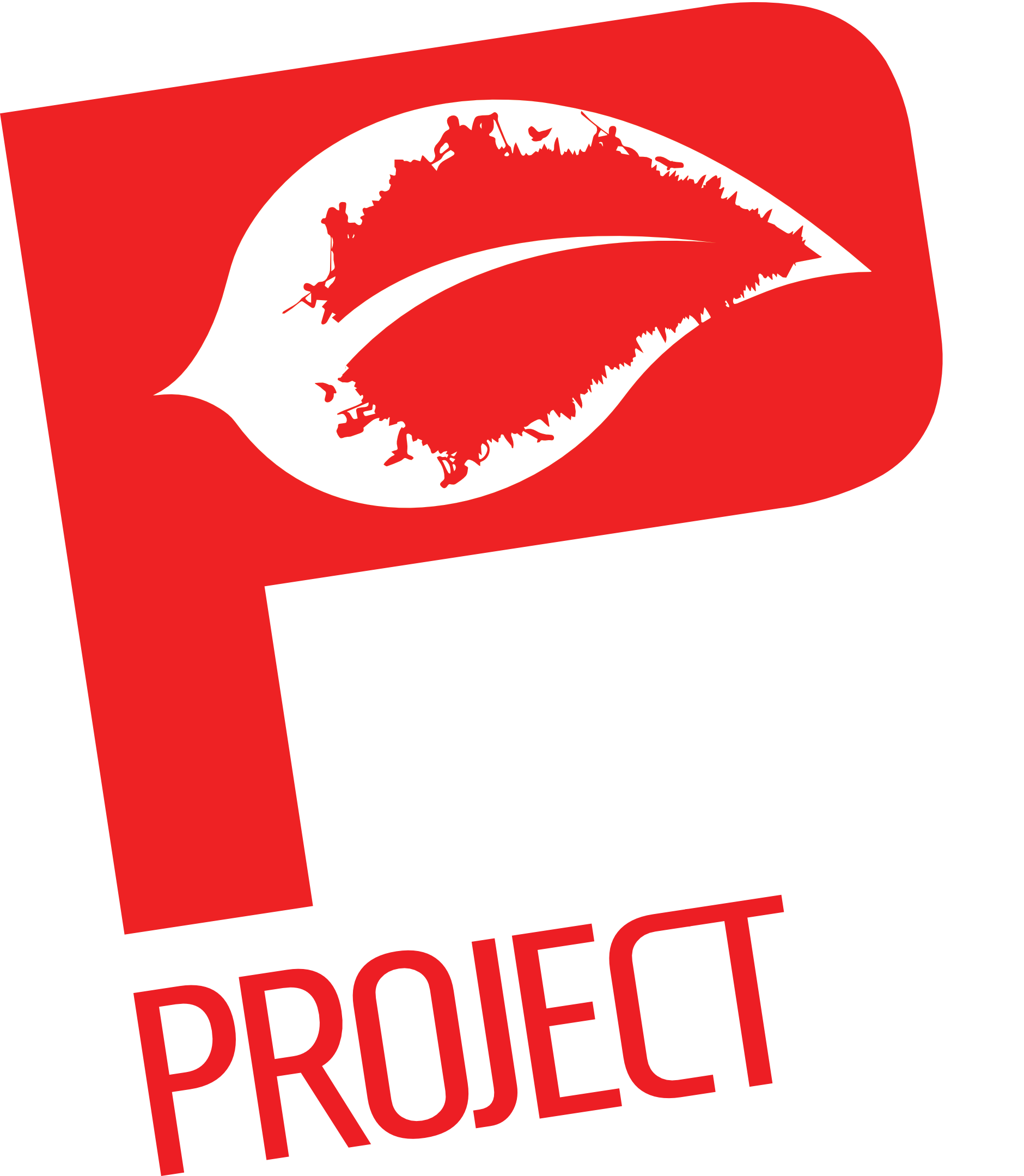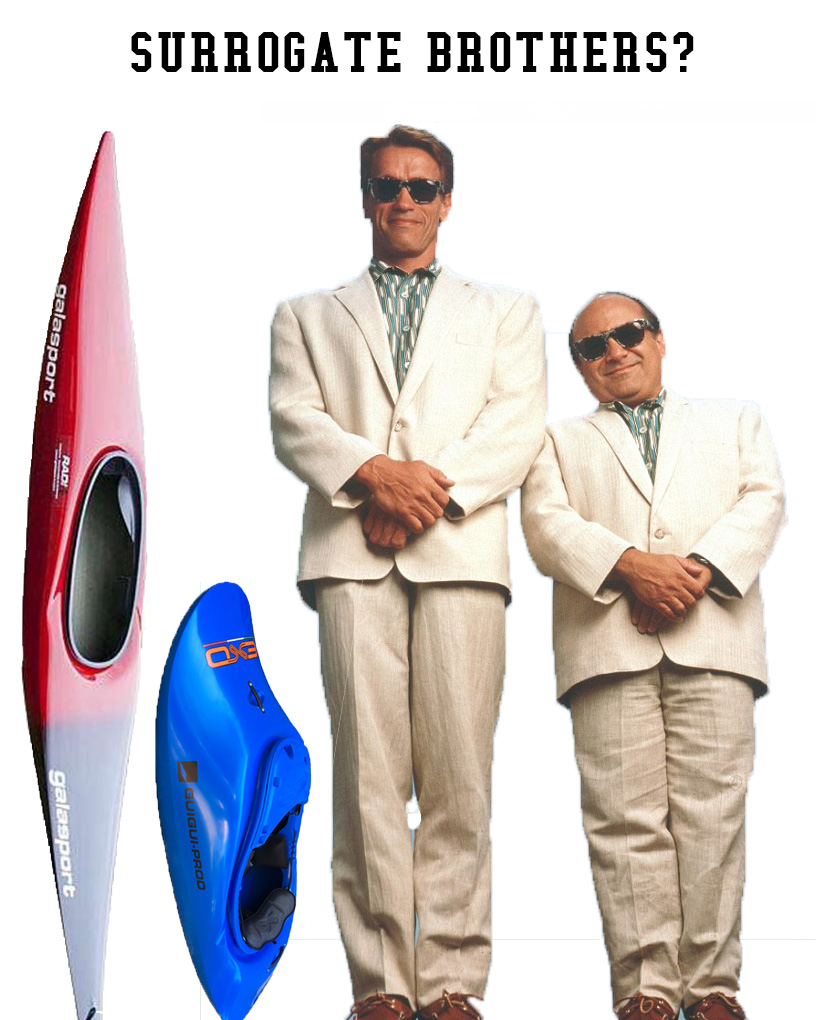SURROGATE BROTHERS FREESTYLE & SLALOM
The family members that matter…………or do they?
Your first thought when seeing the picture and title might have been, “SURROGATE BROTHERS? This dude must have hit something hard before writing this”, or possibly it was as simple as, “what an idiot”. I assure you that I have not “hit” anything, except a few keystrokes on the handy laptop, and I have been known to be an idiot from time-to-time, so I will not argue that point. With all of that in consideration, I ask for a little indulgence as we take a closer look at these brothers, and what it is about them that just might matter to you when you are dropping the next waterfall after a stretch of Class V, or running your local Class II. At the end, you may still think I am an idiot, but at least you will have a glimpse into how I became one.
Slalom whitewater kayaking was born September 11, 1932 in Switzerland. Slalom was based on the same idea as ski slalom, and was seen as a “whitewater test” of abilities. Unfortunately, the tragedies of WWII put everything in the world on hold, including the growth of whitewater slalom competition. It might have slowed the growth, but it didn’t stop it and the first International World Championship were eventually held in Geneva Switzerland in 1949. That same year the little town of Salida, Colorado started the FIBArk, a whitewater competition on the Arkansas river. This race was said to be started with a bar bet between two people. These events would soon collide with influential kayakers, and start the relationship that would birth US Slalom and Freestyle.
One year earlier, in 1948, Milo Duffek from Czechoslovakia qualified for the Olympics; however, he was not permitted to travel outside the Iron Curtain to participate. This changed in 1953, when he was allowed to travel to Merano, Italy to participate in the World Championships. It was here that he introduced the world to the “Duffek” stroke, which is in use today. Winning was what he was sent to Melano for; however, his real ambition was not to win the World Championships, but to win his freedom. He knew that if he won in Melano it would draw too much attention to himself and adversely affect his ability to defect. He purposefully hit a pole during his run, and that night his guard got drunk in the celebration and Milo was able to slip away relatively unnoticed by the masses. Even he would not realize the impact that decision would have on his life and modern boating. We will get back to Milo in a minute.

The second thing that happened in 1953 worth noting, is the FIBArk in Salida Colorado held the first ever slalom race in the US, and offered large prize money (around $500 to the winner) to entice Europeans and other participants. Salida leaders thought by offering big prize money, and offering to pay expenses to Europeans, they could attract elite slalom racers from Europe to participate. They were right, and three very influential paddlers joined the race over the next two years. These three water kings were Roger Paris Erich Siedel, and Walter Kirschbaum. It wasn’t until 1954, we saw Walter Kirschbaum join the first two in participating in what is now the oldest whitewater race in the US. These three were three of many to come. All three of them loved the area so much that they decided to stay in the US and began to teach locals their techniques. This is where Milo comes back into the picture.
Let’s fast forward to the 60’s and 70’s. Milo continued to have impact on whitewater kayakers, not by winning races, but for what he did when he was not racing. In the US, Roger Paris, Walter Kirschbaum and Erich Seidel all had positive impacts on the growth of whitewater racing through teaching; however, it was Milo that started introducing advanced techniques such as front-surfing waves, ferry-gliding as a means of enjoyment, and switching from side-to-side in a hole just to have fun. He also emphasized the importance of practicing maneuvers on flatwater before taking it to the rapids. His focus became less about racing, and more about technique that made running the river more fun. He never moved to the US, but he often taught clinics and was influential on those who would teach the next generation. He planted the seeds that would later flourish into freestyle.
From the early 80’s, the idea of playing on the river became more and more popular. It was the late 80’s and early 90’s, that we started to see competitions for freestyle. This truly was the birth of the second brother, Freestyle. In 1991, Andy Middleton had a brain child of holding a whitewater “rodeo” at the Bitches in the UK, and so was born the modern whitewater rodeo. In 1993, the first Freestyle World Championships were held, where Eric Jackson, Scott Shipley, and Shane Benedict took the top three spots for the men and Bridget Thomas, Roxanne McDonough, and Susan Gentry for the woman in K1.
Scott Shipley, Eric Jackson, and Corran Addison all had DNA as slalom kayakers. In 1995, Corran arguably created the first planning hull kayak, the Riot Fury. In 1997, Eric Jackson created “X” for Wavesport, his version of a planning hull kayak. This idea of playing in features of the river started with guys like Milo Duffek in the 50’s and 60’s, and can be seen in the genes of ex-slalom turned modern playboaters.
Playboating hit its stride in the late 90’s and early 2000’s, with every kid and adult wanting a playboat. This surge lasted for several years, partly fueled by Jackson Kayak Company, which was started in 2003 by EJ. This isn’t a discussion on the state of slalom or freestyle, or companies, it is a discussion about whether it matters that freestyle and slalom exist today.
Freestyle and Slalom are surrogate brothers, with similar DNA traces, even though they look completely different on the surface. The nature of their relationship in not as important as how they were nurtured. To understand this importance to us today, you must look how each were raised in their time period, for this is the source of illumination into their true power as surrogates.
See these brothers, Slalom and Freestyle, were raised with discipline. They were raised with practice, precision, and dedication. Yes, they share a lineage from the Great slalom kayakers, but more importantly they shared the Greats ethos of practice and technique. The commonality found in slalom and freestyle is PURPOSEFUL PRACTICE. This was brought to freestyle from the parents of the slalom discipline. It was the slalom kayakers that understood the importance of practicing on flatwater, just as Milo Duffek first introduced. It was the slalom kayakers that understood the importance of running certain features over and over again to get the automatic response and feel required to be competitive. This purposeful and deliberate practice was necessary for freestyle. In order to enjoy even the smallest wave, it takes practice and skill development. A person has to go to the wave and spend time on the water, with the sole intent of learning a specific skill. Both slalom and freestyle kayaks demand precision, and practice is the only way to achieve it. So the question is, “Is it absolutely critical today for anyone running the river to have the same level of practice and precision?” The honest answer is, “no”.
With the forgiving boat designs of today, specifically in wide, large volume kayaks, a person with minimal experience can quickly learn the necessary skill to navigate Class II, and possible Class III water relatively safely. This is not a bad thing, as it makes the sport more accessible to more people. Kayaking is increasing overall as seen by the increase from 6M US participants in 2006 to nearly 16M in 2017. Granted most of these are on sit-on tops on the lake; however, as the numbers on the lake increase, the numbers on the river will too, especially with more accessible kayaks. No one should look down on anyone who’s only desire is to become skilled just enough to float the local Class II. The boom of the playboating and slalom days have all but been quelled to a dull roar, but it doesn’t mean they are dead or should be. In fact, if you really want to improve on your creeking, river running, racing, freestyling, and overall skill, look no further than your local coach and the two surrogate brothers, Freestyle and Slalom. At the very least, adopt the idea that purposeful and deliberate practice are key to maximizing your fun and abilities to run all classes of river, including your local Class II. The brothers mattered then, and still do today. So don’t be afraid to jump into a freestyle or slalom boat and take one of them for a spin, you just might find yourself loving the river all that much more, no matter what boat you are in.


Leave A Comment
You must be logged in to post a comment.